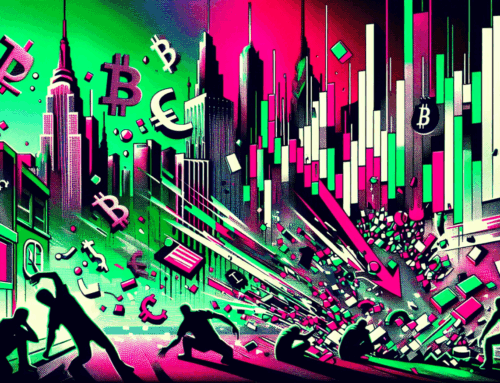Job bloodbath! Mass layoffs hit America as 172,000 jobs vanish — is this shocking wave of
October 29, 2025
U.S. job marketis facing one of its toughest moments in recent years. In a shocking wave of layoffs,172,000 jobshave disappeared across major sectors, leaving workers and families worried about the future. The sudden losses have sent ripples across the economy, sparking questions about whether arecessioncould be on the horizon.
The latest data from Challenger, Gray & Christmas shows job cuts surged 28% month-over-month and are up 42% year-over-year, signaling a clear slowdown in hiring momentum. The impact is being felt hardest across tech, retail, and finance, with household names like Amazon, Meta, Google, and Citigroup leading the way.
Amazon confirmed a massive corporate downsizing of around 14,000 jobs, targeting tech, HR, and management divisions as it shifts focus toward artificial intelligence and automation. The company called it a “strategic realignment” to stay efficient in an AI-driven economy. Meta, too, is quietly cutting around 8,000 jobs this quarter after its so-called “Year of Efficiency.” CEO Mark Zuckerberg said Meta needs to remain “disciplined and lean” as ad revenues flatten and global digital spending slows.
Meanwhile, smaller firms and startups are also trimming headcounts amid tighter financing conditions. Across the private sector, only 151,000 new jobs were added in October, far below Wall Street’s projection of 175,000. The unemployment rate has climbed to 4.2%, its highest since 2021, hinting that the once red-hot labor market is finally cooling. Economists at Goldman Sachs warn that the trend may continue into early 2026 if hiring freezes persist.
Analysts say this wave of layoffs marks a shift from the post-pandemic boom to a cautious, cost-cutting phase. Companies are now prioritizing productivity and automation over expansion. “This looks like the calm before the storm,” said economist Diane Swonk, noting that rising job losses could soon feed into lower consumer spending and business confidence — two pillars that have kept the U.S. economy afloat.
Despite the gloomy tone, not everyone predicts a recession yet. GDP growth remains steady at 1.9%, and consumer spending has held up in key categories like travel, entertainment, and retail. However, the sudden pullback in hiring suggests that growth could lose momentum if job losses accelerate through the winter months. Some companies, including Microsoft and Nvidia, are still expanding their AI teams, hinting at selective optimism in high-growth areas even as traditional roles disappear.
For now, America stands at a crossroads. The 172,000 layoffs are a red flag that the labor market is losing its resilience. Whether this turns into a full-blown U.S. recession depends on how deep the next round of cuts goes — and whether consumers can keep spending through a winter of corporate uncertainty and tightening budgets.
What sectors saw the biggest job losses in this wave
The biggest job losses in the recent wave of layoffs in the US have been concentrated in the following sectors:
Technology: The tech sector has been hardest hit, with over 128,000 jobs cut across 218 companies, including major layoffs at Amazon, Intel, Microsoft, Meta, and others. The cuts include corporate roles, AI-related jobs, hardware manufacturing, and mobility sectors within tech. The focus is on efficiency and AI integration, resulting in reduced workforce size especially in corporate and middle management roles.
Retail: Retail has also suffered massive job losses, with U.S. retailers cutting more than 64,000 jobs in 2025 due to bankruptcies, tariffs, and economic challenges. Giant retailers have reduced their workforces drastically.
Government: About a third of job losses relate to the government sector and related fields. Federal workforce reductions continue to affect agencies such as the Park Service and U.S. Geological Survey.
Manufacturing and logistics: These sectors face layoffs driven by tariffs, supply chain disruptions, cost cutting, and automation. Companies like UPS plan tens of thousands of job cuts, and auto manufacturers have announced reductions.
Healthcare and media: These sectors are also seeing job cuts amid market conditions and company cost-saving efforts.The layoffs reflect economic uncertainty, tariff impacts, AI-driven automation, and corporate restructuring aimed at improving profitability and adapting to technological shifts. The technology sector leads the job loss numbers but multiple sectors feel the impact strongly.
Here’s the sector-wise breakdown:
- Technology: 68,000 jobs cut. Most layoffs were in software companies and IT services.
- Finance: 42,000 positions lost in banks and financial institutions.
- Retail: 38,000 roles eliminated due to store closures and slower sales.
- Other industries: 24,000 jobs affected in logistics, manufacturing, and hospitality.
The layoffs show that industries heavily affected by automation, AI, and market fluctuations are feeling the strain first.
These numbers highlight how concentrated the job losses are, meaning some sectors may recover faster than others. Workers in tech and finance are particularly affected.
Why are these layoffs happening now?
Several factors are driving these mass layoffs. Companies are adjusting to economic changes, rising costs, and slower growth.
Key reasons include:
- Economic slowdown: Many businesses are cutting staff to reduce expenses.
- High operational costs: Inflation and supply chain issues have increased overheads.
- Automation and AI adoption: Some roles are being replaced by technology.
- Decline in consumer spending: Fewer people are buying, which affects company revenues.
Experts say this wave of layoffs could be a sign of broader economic weakness. If hiring continues to drop, the risk of a recession grows.
Workers should pay attention to these trends to plan their finances and career moves carefully.
Could these tech cuts trigger a broader economic recession
The potential for widespreadtech layoffsand automation-driven job losses to trigger a broader economic recession is now a major concern among economists and business leaders. Many experts warn that deep cuts across the tech and corporate sectors could spill over into the wider economy, weakening consumer spending and confidence — the two pillars that drive U.S. growth. The fear is that if this wave of layoffs expands, it could push the country closer to a full-scale economic slowdown.
Job losses in high-income and white-collar sectors typically reduce overall consumer spending. When skilled professionals lose jobs, confidence drops, and households tend to cut back on discretionary purchases, directly affecting retail, housing, and services. Economists note that even a modest decline in consumer demand can ripple through the economy and slow GDP growth.
At the same time, automation and artificial intelligence are creating a complex economic paradox. While AI promises higher productivity and efficiency, it also risks displacing large segments of the workforce. Automation-driven job cuts could lead to income stagnation and lower purchasing power, dampening the very demand needed to sustain growth. This trend, if unchecked, might deepen inequality and suppress middle-class spending — both key factors in recession dynamics.
Financial market risks are also part of the equation. Overreliance on AI models in trading, finance, and business operations can create systemic vulnerabilities. Any disruptions or miscalculations could trigger broader market instability, further amplifying recession fears.
Several industry figures have already sounded the alarm. Klarna CEO Sebastian Siemiatkowski and other analysts warn that rapid AI adoption could cause short-term recessions as job displacement outpaces new employment opportunities. Economic research supports this view, showing that demand shocks triggered by job losses often mark the start of cyclical downturns. If spending power erodes across multiple industries, overall growth could slow enough to tip the economy into a recession.
However, some economists remain cautiously optimistic. They argue that technological disruption, though painful in the short term, often leads to new industries and long-term productivity gains. With adaptive policy measures, investment in reskilling, and strategic regulation, governments could offset much of the damage and guide the transition smoothly.
Here’s what economists are warning:
- Slower consumer spending: Less money in the economy may impact retail and service sectors.
- Pressure on businesses: Companies may delay investments and hiring.
- Possible recession: If layoffs continue, a recession could follow.
- Housing and loans: Unemployed workers may struggle to pay mortgages or loans.
While the US economy is still strong in some areas, this job loss wave could be an early warning. Monitoring upcoming economic indicators like consumer spending and manufacturing output will show the real impact.
How can workers protect themselves?
If you are affected by layoffs, there are steps you can take to stay secure financially and professionally.
- Apply for unemployment benefits: Many states offer aid quickly after job loss.
- Look for jobs in stable sectors: Healthcare, education, and essential services are more resilient.
- Cut non-essential spending: Budget carefully until the market stabilizes.
- Upskill and retrain: Learning new skills can make you more employable in growing industries.
Taking proactive steps can help workers weather this period and prepare for opportunities as the economy recovers.
How does this compare to previous layoffs?
The current layoffs are the largest since the tech sector downturn in 2023. However, past data shows that recovery is possible if the economy adjusts quickly.
Historical examples of technology-driven productivity shocks reveal a pattern of short-term disruption followed by long-term economic gains. Each major innovation wave initially caused structural shifts, job displacement, and slower productivity, but over time, these technologies helped expand economies, increase wages, and create new industries.
The Industrial Revolution of the 18th and 19th centuries is the clearest example. It transformed agriculture, manufacturing, and transportation through mechanization and innovation. While it displaced many traditional jobs, it eventually increased wages, expanded populations, and boosted national income. Productivity soared as factories and machines replaced manual labor, marking a major positive technology shock that reshaped global economic systems.
During the electrification and post–World War II era, economies experienced a similar adjustment period. The introduction of electric power and automation initially caused a temporary slowdown in productivity growth. Firms had to adapt, retrain workers, and reorganize operations to integrate the new technologies. Once the transition stabilized, productivity accelerated dramatically, driving decades of prosperity in advanced economies.
The computer and internet boom of the late 20th century followed a comparable trajectory. The emergence of digital technologies and online connectivity created short-term uncertainty and structural shifts across industries. Early productivity gains were modest as companies learned how to use new tools effectively. However, as computing and the internet spread, businesses became more efficient, innovation surged, and global connectivity reshaped commerce and communication, yielding significant long-term growth.
In the 1970s, technology-induced slowdowns were again observed. Rapid investment in new technologies and automation led to temporary disruptions in labor markets, including rising wage inequality and adjustment lags. Many firms struggled to fully exploit these technologies immediately, resulting in slower productivity gains until the workforce adapted to the new environment.
Recent research suggests that post-2008 productivity growth has been weaker, partly because recent technology shocks — including digital automation and AI — have been less transformative at scale. Economists note that while these innovations can reduce employment in the short run, they generally enhance productivity over time. The diffusion of new technologies often takes longer, especially in emerging markets, as infrastructure, regulation, and skills catch up.Overall, history shows that while technology shocks can disrupt labor markets and slow growth temporarily, they usually lead to stronger productivity and economic resilience in the long run. The challenge for policymakers and industries lies in managing these transitions efficiently to minimize short-term pain and maximize long-term gains.
- 2023 tech layoffs: Concentrated in software and IT, about 120,000 jobs lost.
- Retail downturn 2022: Store closures caused around 85,000 layoffs.
- Current 2025 wave: 172,000 jobs lost, most in tech, finance, and retail.
This trend suggests that layoffs are focused on high-growth, high-risk industries. Some sectors bounce back faster, while others may take longer.
In summary, while current AI-related and tech-sector layoffs alone don’t confirm an imminent recession, they significantly increase the risk. If rising unemployment, weak consumer spending, and market volatility continue to align, the likelihood of a deeper downturn will grow. The challenge now lies in how policymakers and industries manage this transformation to avoid an automation-led economic shock.
(You can now subscribe to our Economic Times WhatsApp channel)
Search
RECENT PRESS RELEASES
Related Post



